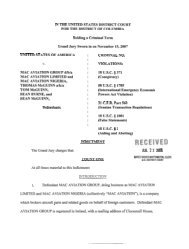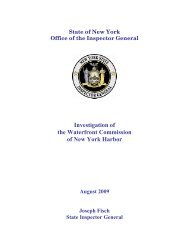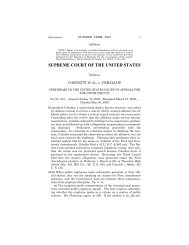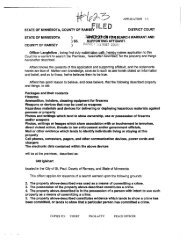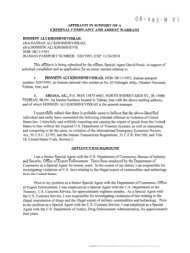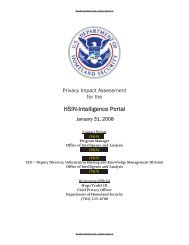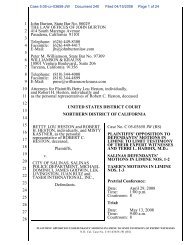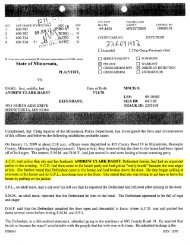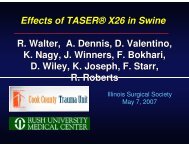TASER Electronic Control Devices Review Of Safety Literature
TASER Electronic Control Devices Review Of Safety Literature
TASER Electronic Control Devices Review Of Safety Literature
You also want an ePaper? Increase the reach of your titles
YUMPU automatically turns print PDFs into web optimized ePapers that Google loves.
2. Finally, with the combs perfectly aligned, so that the currents actually summed,<br />
AND both ECDs had BOTH of their barbs land ACROSS the heart, the human<br />
safety margin of about 50:1 would only be reduced to 25:1.<br />
2.16 Pacemakers and Implantable Defibrillators.<br />
There has been concern about an ECD being used on a patient with a pacemaker<br />
or ICD (implantable defibrillator).<br />
Fortunately, pacemakers and ICDs are required by international standard to<br />
withstand the 360 joule shock of an external defibrillator. 129 This has over 5000<br />
times the energy of an X26 pulse.<br />
Lakkireddy et al implanted 7 different ICDs and 9 different pacemaker models in<br />
a small (28 kg) swine. 130 They then applied <strong>TASER</strong> X26 currents through the<br />
worst case pathway with one barb at the sternal notch and the other at the point<br />
of maximum cardiac impulse. While they noted occasional capture (extra heartbeat),<br />
there were no inductions of any sustained arrhythmias. These results suggest<br />
that ECDs are safe despite a rare encounter with a pacemaker patient. It is<br />
possible that an ICD could be confused by the ECD pulses into thinking there<br />
was VF present. In that case it would deliver an unnecessary shock. This has not<br />
yet been reported nor would it harm the patient or the ICD.<br />
There have been 2 published case studies of such rare encounters and neither<br />
subject had serious harm. 131,132 The first was with an ICD implanted into a 51<br />
year old female patient. Probes struck the woman in the sternum and the pulses<br />
were mistaken by the ICD as VF. The device began charging its capacitors to deliver<br />
a shock. By the time the capacitors were charged, the ECD application was<br />
over and the ICD then went back to normal monitoring operation without delivering<br />
a shock.<br />
In the second case a male prisoner had a pacemaker which possibly conducted<br />
some current from a chest ECD application from the pacemaker housing through<br />
protection circuitry and down the pacing lead into the right ventricle. This may<br />
have caused some temporary cardiac capture but had no lasting effects.<br />
It is interesting to compare the level of testing for the FDA approaval of a new<br />
type of pacemaker to that of the X26. A new pacemaker will typically be tested on<br />
30-60 patients. The X26 was tested on 300 human beings before the first one<br />
was sold.<br />
48




